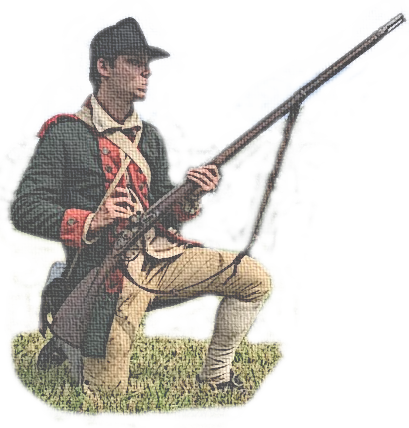
Ordered that in consequence of a recommendation from the Continental Congress a Body of Troops not exceeding five hundred men, officers included, be forthwith raised of those called Green Mountain Boys, that they elect all their own officers except Field Officers...
That the said troops, when raised, be considered as an Independent Body, their Field Officers taking rank after the Field Officers of the other Troops to be raised by this Colony for the Continental Service. That their Corps of Officers consist of one Lieutenant Colonel, one Major, seven Captains and fourteen lieutenants and that the General be furnished with Blank Warrants to be filled up by him, agreeable to such election as above mentioned.
~ Die Martis, 9 ho. A.M. 15th Augt.1775
First raised, upon recommendation of the Continental Congress, as a New York regiment in July, 1775 and comprised of many of the original "Green Mountain Boys," and a handful of veterans of Robert Rogers' Corps. of Rangers, the Regiment served in several crucial engagements of the Northern Campaign during the American Revolution. In one of the opening moves of the war, the Green Mountain Boys under Ethan Allen, Seth Warner, and Benedict Arnold captured the fortifications at Ticonderoga and Crown Point in 1775. The captured artillery eventually was used to force the British evacuation from Boston. Later that year, the Regiment participated in the push to Montreal, Canada. The unit was disbanded in December of 1775.
Recalled to service in January of 1775, the unit returned to Canada as a 90 day Continental unit, where they remained an extra five to six weeks, forming the rear-guard in the retreat from Quebec City. They were discharged in May of 1776.
Raised again, this time as Warner's Extra-Continetntal Regiment by the Continental Congress on July 5th, 1776, the Regiment fought a successful rearguard action at Hubbardton, VT to protect the retreating Northern army. At Bennington, VT, the Regiment arrived in time to defeat Brunswick reinforcements who were threatening to defeat the American forces. These two engagements crippled British General Burgoyne's elite Advanced Corps., and as part of the Pawlett Expedition to threaten the British rear, the Regiment was instrumental in setting the stage for Burgoyne's surrender at Saratoga, NY.
The Regiment remained in garrisons along the Lake Champlain, Lake George area to scout and guard against additional incursions by remnants of British forces remaining in Canada until disbanded in 1781.
